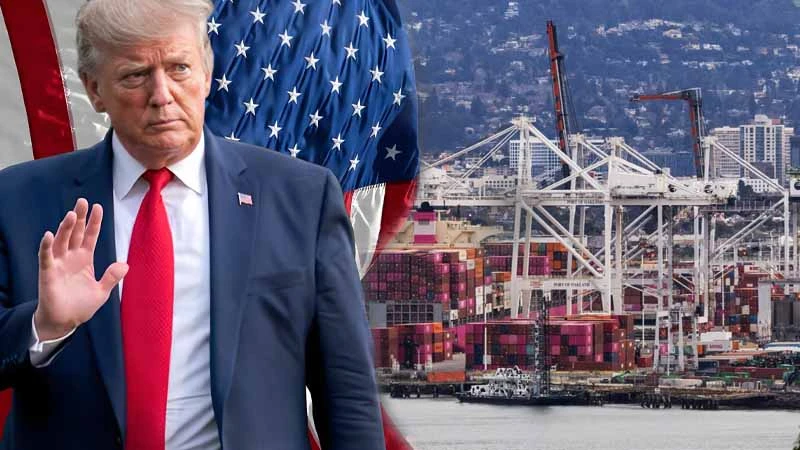Web3.0: The Strategic Compass for Asian Investors
When the composability of blockchain reconstructs the genetic sequence of financial infrastructure, Asian capital markets are undergoing a silent power shift. This article will cut through the fog of technical jargon to reveal the value migration path and risk navigation strategies for practical investors in the Web3.0 era.
Liquidity revolution under the Web3.0 framework
The modular nature of smart contracts is rewriting the underlying logic of capital flows. In traditional finance, cross-border settlement processes that require multiple intermediaries are now compressed into on-chain protocols executed automatically by code. This breakthrough in the technological paradigm has triggered two irreversible trends: asset interoperability breaking geographical boundaries and the transfer of value transmission dominance from institutions to the protocol layer.
In Southeast Asian markets, the investment threshold for commercial real estate has collapsed due to property tokenization, enabling retail investors to participate in domains previously exclusive to institutions through fractional ownership. This process of liquidity democratization requires investors to redefine valuation models—when usage-right income can be split in real time via smart contracts, the parameters of discounted cash flow models must incorporate variables related to on-chain execution efficiency.
Power games at the protocol layer
The maturity of cross-chain bridge technology has freed value transmission from the ecological barriers of single public chains. Investors need to be wary of the hidden costs in the competition of technical standards: the convenience brought by Ethereum Virtual Machine (EVM) compatibility may obscure the performance advantages of emerging scaling solutions such as ZK-Rollup. Choosing a technological path is, in essence, an early arrangement for future governance discourse power.
Gradient regulatory dividends of Web3.0
Differences in regulatory philosophies among Asian economies are shaping unique policy arbitrage opportunities. Singapore’s “regulatory Lego” model allows modular compliance innovation, while Hong Kong builds a risk firewall for institutional investors through rigid requirements such as cold wallet storage and third-party audits. This momentum gap formed by regulatory gradients has generated capital undercurrents across jurisdictions.
Institutional investors’ practical strategies show a clear dual-track feature:
- Obtaining compliance premiums through licensed exchanges.
- Setting up SPV in policy-free zones such as Dubai’s free-trade zone to build a jurisdictional buffer for risk hedging.
This art of dynamic balance is the core essence of regulatory arbitrage in the Web3.0 era.
Innovative tension of sandbox mechanisms
Regulatory sandboxes are not just technology testbeds but stress-testing rooms for institutional innovation. Japan’s reserve audit requirements for stablecoin issuers and South Korea’s investor protection fund mechanisms for retail investors form a complementary policy toolbox. Astute investors have begun mapping “regulatory heatmaps” to anchor value targets at the intersection of policy lowlands and technological highlands.
Capital metamorphosis and risk dialectics in Web3.0
The penetration of tokenization technology into physical assets is essentially a genetic transformation project of asset liquidity. Once supply chain receivables are converted into programmable on-chain assets, their pricing model no longer relies on the credit endorsement of a single institution but depends on the execution guarantee of smart contracts and cross-protocol interoperability. This migration of value anchors is reshaping the formula for calculating risk and return.
In Southeast Asia’s logistics sector, the tokenization of warehouse space not only lowers investment thresholds but also achieves dynamic pricing of usage rights through IoT data on-chain. This paradigm shift from “static valuation of ownership” to “dynamic returns of usage rights” requires investors to build on-chain cash flow analysis capabilities.
Survival rules in the dark forest
The borderless nature of decentralized finance transforms traditional credit risk into a complex of technical and governance risks. The logical integrity of smart contracts, the concentration of token distribution in DAO governance, and proof of asset reserves in cross-chain bridges—these new risk dimensions constitute the “dark forest hypothesis” of Web3.0 investment. Mature investors often directly include vulnerability audit costs and escape route design in their expected return models.
Asset Allocation Framework in the Web3.0 Era
Amid the dynamic balance of technological evolution and regulatory adaptation, the asset allocation of practical investors exhibits a clear hierarchical structure. Regulated stablecoins and licensed exchange equities form the foundational defensive positions, real estate tokens and supply chain finance NFTs act as the mapping layer of the real economy, while cross-chain bridge protocols and zero-knowledge proof solutions carry the risk exposure of technological breakthroughs.
The essence of this “three-tier infiltration” model is to encapsulate the disruptive potential of Web3.0 within controllable risk containers. When the Bank of Thailand’s digital currency and cross-border payment protocols complete interoperability testing, and when the yield curve of institutional-grade on-chain bonds begins to show β decoupling characteristics from traditional markets, the strategic value of such structured allocation will accelerate its release.
The Endgame Competition of Cognitive Elevation in Web3.0
The true barrier in the Web3.0 era does not lie in the superficial ability to understand technology, but in the capability to map cryptographic primitives to financial applications. From the commercialization path of elliptic curve cryptography to homomorphic encryption, from Merkle tree data verification to the on-chain anchoring of real-world assets, this technology-to-finance translation ability will determine an investor’s ecological niche in the wave of value reconstruction.
As the boundaries of regulatory sandboxes continue to expand and the battle for governance rights at the protocol layer becomes increasingly intense, only investors with “technological analytical power, policy forecasting capability, and ecosystem-building ability” can transform the chaotic potential energy of Web3.0 into structural returns. This is not a simple technology race, but an evolutionary survival process concerning the cognitive paradigm upgrade of finance.
Frequently Asked Questions
Q1. What are Web1.0, Web2.0, and Web3.0?
- Web1.0 (1990-2004): Known as the “static web”, users could only browse website content in a one-way manner (such as news websites or corporate official sites), without interaction or content creation. The core technologies were HTML and HTTP protocols.
- Web2.0 (2004-2020): Entered the “interactive social era”, where users could generate content (such as posting on Facebook or uploading videos to YouTube), but data was controlled by platforms, and the business model relied on advertising and data monetization.
- Web3.0 (2021 to present): A “decentralized web” based on blockchain, where users own data sovereignty and directly control assets and identity through crypto wallets and smart contracts. Typical applications include DeFi, NFT, and DAO.
Q2. What is Web3 actually doing?
- Decentralized Finance (DeFi): Provides lending and trading services through smart contracts (for example, Uniswap’s daily trading volume exceeds 1 billion USD).
- Digital Asset Ownership (NFT): Puts artworks, game items, and other assets on-chain to ensure uniqueness and ownership (for example, the total market value of Bored Ape NFTs reaches 4 billion USD).
- Decentralized Autonomous Organizations (DAO): Manages community funds and decisions through token voting (for example, ConstitutionDAO once raised 47 million USD to bid for a copy of the US Constitution).
- Metaverse Economy: On-chain asset trading such as virtual land (Decentraland) and digital identities (ENS domains).
Q3. How can ordinary people make money through Web3?
| Method | Operational Example | Potential Earnings | Risk Level |
| Liquidity Mining | Provide liquidity pools on PancakeSwap | Annualized 5%-50% transaction fee sharing | Medium to High |
| NFT Creation and Trading | Launch an art series on OpenSea | Royalty commission (5%-10%) | High |
| Staking Rewards | Stake Ethereum (ETH) to participate in POS validation | Annualized 3%-7% interest | Medium |
| Play-to-Earn Gaming | Breed virtual pets and battle in Axie Infinity | Passive income of 1-5 USD per day | Low |
| Airdrop Hunting | Participate in new protocol testing to receive free tokens | A single airdrop can reach thousands of USD | Low |
Related articles
-
Since 2025, global financial markets have continued to focus on the monetary policy trends of the US Federal Reserve (Fed) and movements in the US Dollar Index. As a barometer of the international market, the performance of the US Dollar Index (DXY) directly affects asset prices and capital flows in...2025 年 3 月 18 日
-
2024 Q4 US Nasdaq Index plunged 3.6%, while the Hang Seng Tech Index fell 4.2% simultaneously, highlighting that the linkage between the two markets has deepened to the level of capital flows. Facing the Federal Reserve’s policy swings, the tech industry’s cyclical shifts, and rising geopolitical risks, Hong Kong stocks...2025 年 2 月 21 日
-
In February 2025, Donald Trump's 25% tariff on imported cars triggered an instant earthquake in the global supply chain. This trade policy, which has been labelled “America First 2.0", has not only forced multinational car companies to urgently reorganise production, it has also pushed the price of precious metals past...2025 年 2 月 21 日













